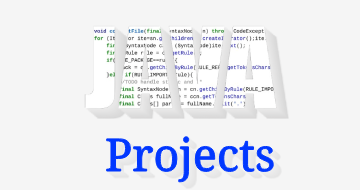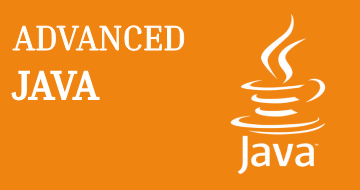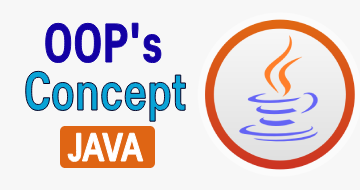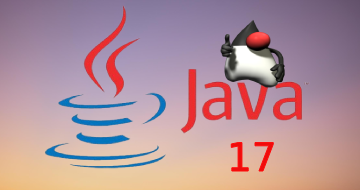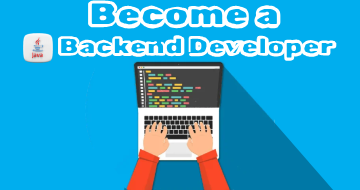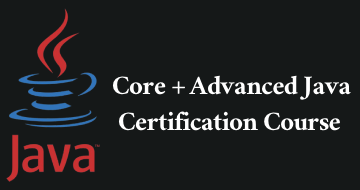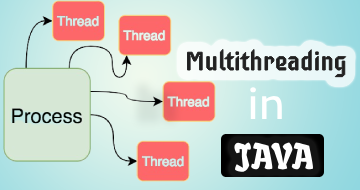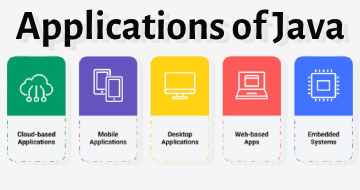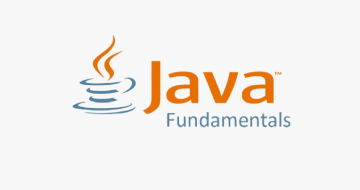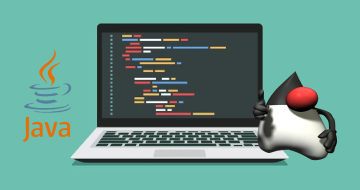Java Programming for Complete Beginners by Udemy
Java Programming for Beginners to Java Object Oriented Programming. Core Java + REST API with Spring Boot. Java 8 to 16.
Course Highlights
- HANDS-ON with EXERCISES and PUZZLES: Learn Object Oriented Programming with Java
- CLEAR YOUR JAVA INTERVIEWS: GET ALL the SKILLS to demonstrate an EXPERTISE with Java Programming
Skills you will learn!
Curriculum
4 Topics
DO NOT SKIP THIS: LEARN and WIN
Step 01 - Course Overview - Java Programming For Absolute Beginners
Course Downloads - Course Guide and Presentation
DO NOT SKIP - in28minutes Learning Community
6 Topics
Recommended Java Version - Java 21
Step 00 - Installing Java - Overview
Step 01 - Installing Java - Windows
Step 02 - Installing Java - Mac
Step 03 - Installing Java - Linux
Step 04 - Troubleshooting Java Installation
41 Topics
Step 00 - Step By Step Problem Solving with Programming
Step 01 - Introduction to Multiplication Table challenge
Step 02 - Getting Started with JShell
Step 03 - Break Down Multiplication Table Challenge
Step 04 - Java Expression - An Introduction
Step 05 - Java Expression - Exercises
Step 06 - Java Expression - Puzzles
Section Quiz 1
Step 07 - Printing output to console with Java
Step 08 - Printing output to console with Java - Exercise Statements
Do You Want to Help Us?
Step 09 - Printing output to console with Java - Exercise Solutions
Step 10 - Printing output to console with Java - Puzzles
JShell Tip - Multiple Lines of Code
Step 11 - Advanced Printing output to console with Java
Step 12 - Advanced Printing output to console with Java - Exercises
Section Quiz 2
Step 13 - Introduction to Variables in Java
Step 14 - Introduction to Variables in Java - Exercises and Puzzles
Step 15 - 4 Important Things to Know about Variables in Java
Step 16 - How are variables stored in memory?
Step 17 - How to name a variable?
Section Quiz 3
Step 18 - Understanding Primitive Variable Types in Java
Step 19 - Understanding Primitive Variable Types in Java - Choosing a Type
Java Tip - String Concatenation
Step 20 - Java Assignment Operator
Step 21 - Java Assignment Operator - Puzzles on Increment Decrement and Compoun
Step 22 - Programming Tips : JShell - Shortcuts Multiple Lines and Variables
Section Quiz 4
Step 23 - Java Conditionals and If Statement - Introduction
Step 24 - Java Conditionals and If Statement - Exercise Statements
Step 25 - Java Conditionals and If Statement - Exercise Solutions
Step 26 - Java Conditionals and If Statement - Puzzles
Step 27 - Java For Loop to Print Multiplication Table - Introduction
Step 28 - Java For Loop to Print Multiplication Table - Exercise Statements
Step 29 - Java For Loop to Print Multiplication Table - Exercise Solutions
Step 30 - Java For Loop to Print Multiplication Table - Puzzles
Step 31 - Getting Started with Programming - Revise all Terminology
Section Quiz 5
How to remember things for long time
17 Topics
Maximizing Learning Efficiency with Playback Speed
Step 00 - Section 02 - Methods - An Introduction
Step 01 - Your First Java Method - Hello World Twice and Exercise Statements
Step 02 - Introduction to Java Methods - Exercises and Puzzles
Step 03 - Programming Tip - Editing Methods with JShell
Step 04 - Introduction to Java Methods - Arguments and Parameters
Step 05 - Introduction to Java Method Arguments - Exercises
Step 06 - Introduction to Java Method Arguments - Puzzles and Tips
Step 07 - Getting back to Multiplication Table - Creating a method
Step 08 - Print Multiplication Table with a Parameter and Method Overloading
Step 09 - Passing Multiple Parameters to a Java Method
Step 10 - Returning from a Java Method - An Introduction
Step 11 - Returning from a Java Method - Exercises
Step 12 - Methods - Section Review
DO NOT SKIP: FLASH CARDS
Section Quiz
How to be consistent?
10 Topics
Step 00 - Section 03 - Overview Of Java Platform - Section Overview
Step 01 - Overview Of Java Platform - An Introduction - java javac bytecode an
DO NOT SKIP - OPTIONAL HANDS-ON
Step 02 - Java Class and Object - First Look
Step 03 - Create a method in a Java class
Step 04 - Create and Compile Planet.java class
Step 05 - Run Planet class with Java - Using a main method
Step 06 - Play and Learn with Planet Class
Step 07 - JDK vs JRE vs JVM
About Your Instructor
12 Topics
Step 00 - Installing Eclipse - Windows
Step 00 - Installing Eclipse - Mac
Step 01 - Creating a New Java Project with Eclipse
Step 02 - Your first Java class with Eclipse
Step 03 - Writing Multiplication Table Java Program with Eclipse
Step 04 - Adding more methods for Multiplication Table Program
Eclipse Tip - Save Actions
Do Not use Modules for now
Step 05 - Programming Tip 1 : Refactoring with Eclipse
Step 06 - Programming Tip 2 : Debugging with Eclipse
Step 07 - Programming Tip 3 : Eclipse vs JShell - How to choose?
How to Stay UpTo Date With Technology Changes
20 Topics
My 10 Rules for Happy Programmers
Introduction To Java Coding Exercises
Coding Exercise: Hello Coding Exercises
Coding Exercise: Print Hello World
Solution Video For Coding Exercise: Print Hello World
Coding Exercise: Time Converter
Solution Video For Coding Exercise: Time Converter
Coding Exercise: Exam Result Checker
Solution Video For Coding Exercise - Exam Result Checker
Coding Exercise: Is Valid Triangle
Solution Video For Coding Exercise - Is Valid Triangle
Coding Exercise: Is Right Angled Triangle
Solution Video For Coding Exercise - Is Right Angled Triangle
Coding Exercise: Sum of Squares of First N Numbers
Solution Video For Coding Exercise - Sum of Squares of First N Numbers
Coding Exercise: Is Leap Year
Solution Video For Coding Exercise - Is Leap Year
Coding Exercise: Is Perfect Number
Solution Video For Coding Exercise - Is Perfect Number
Story of in28minutes
1 Topic
Github Book
20 Topics
Step 00 - Introduction to Object Oriented Programming - Section Overview
Step 01 - Introduction to Object Oriented Programming - Basics
Step 02 - Introduction to Object Oriented Programming - Terminology - Class Obj
Step 03 - Introduction to Object Oriented Programming - Exercise - Online Shoppi
Step 04 - Create Motor Bike Java Class and a couple of objects
Step 05 - Exercise Solutions - Book class and Three instances
Step 06 - Introducing State of an object with speed variable
Step 07 - Understanding basics of Encapsulation with Setter methods
Step 08 - Exercises and Tips - Getters and Generating Getters and Setters with E
Step 09 - Puzzles on this and initialization of member variables
Step 10 - First Advantage of Encapsulation
Step 11 - Introduction to Encapsulation - Level 2
Step 12 - Encapsulation Exercises - Better Validation and Book class
Step 13 - Introdcution to Abstraction
Step 14 - Introduction to Java Constructors
Step 15 - Introduction to Java Constructors - Exercises and Puzzles
Step 16 - Introduction to Object Oriented Programming - Conclusion
DO NOT SKIP - FLASH CARDS
Section Quiz
What should I do when I face a challenge
9 Topics
Coding Exercise: Inches to Object (Feet Inches)
Solution Video For Coding Exercise - Inches to Object (Feet Inches)
Coding Exercise: Create a Square class
Solution Video For Coding Exercise - Create a Square class
Coding Exercise: Create a Point class with 2 d co-ordinates xy
Solution Video For Coding Exercise - Create a Point class with 2 d co-ordinates
Coding Exercise: RGB Color Class
Solution Video For Coding Exercise - RGB Color Class
All Work and No Play Make Adam and Eve Dull Kids
18 Topics
Step 00 - Primitive Data Types in Depth - Section Overview
Step 01 - Basics about Java Integer Data Types - Casting Operators and More
Step 02 - Java Integer Data Types - Puzzles - Octal Hexadecimal Post and Pre i
Step 03 - Java Integer Data Types - Exercises - BiNumber - add multiply and dou
Step 04 - Java Floating Point Data Types - Casting Conversion and Accuracy
Step 05 - Introduction to BigDecimal Java Class
Step 06 - BigDecimal Puzzles - Adding Integers
Step 07 - BigDecimal Exercises - Simple Interest Calculation
Step 08 - Java Boolean Data Type - Relational and Logical Operators
Step 09 - Java Boolean Data Type - Puzzles - Short Circuit Operators
Step 10 - Java Character Data Type char - Representation and Conversion
Step 11 - Java char Data Type - Exercises 1 - isVowel
Step 12 - Java char Data Type - Exercises 2 - isDigit
Step 13 - Java char Data Type - Exercises 3 - isConsonant List Upper Case and L
Step 14 - Primitive Data Types in Depth - Conclusion
DO NOT SKIP - FLASH CARDS
Section Quiz
How to be Productive - 3 Tips
15 Topics
Step 00 - Conditionals with Java - Section Overview
Step 01 - Introduction to If Else Statement
Step 02 - Introduction to Nested If Else
Step 03 - If Else Statement - Puzzles
Step 04 - If Else Problem - How to get User Input in Java?
Step 05 - If Else Problem - How to get number 2 and choice from user?
Step 06 - If Else Problem - Implementing with Nested If Else
Programming Tip - CodingBat dot Com
Step 07 - Java Switch Statement - An introduction
Step 08 - Java Switch Statement - Puzzles - Default Break and Fall Through
Step 09 - Java Switch Statement - Exercises - isWeekDay nameOfMonth nameOfDay
Step 10 - Java Ternary Operation - An Introduction
Step 11 - Conditionals with Java - Conclusion
Section Quiz
Why should you teach others
7 Topics
Coding Exercise: Student Grades A to F based on Marks
Solution Video For Coding Exercise - Student Grades A to F based on Marks
Coding Exercise: Weather Advisor
Solution Video For Coding Exercise - Weather Advisor
Coding Exercise: Switch with Char - Is a Vowel or Not
Solution Video For Coding Exercise - Switch with Char - Is a Vowel or Not
How to handle failures
14 Topics
Step 00 - Java Loops - Section Introduction
Step 01 - Java For Loop - Syntax and Puzzles
Step 02 - Java For Loop - Exercises Overview and First Exercise Prime Numbers
Step 03 - Java For Loop - Exercise - Sum Upto N Numbers and Sum of Divisors
Step 04 - Java For Loop - Exercise - Print a Number Triangle
Eclipse Tip - Templates - sysout main fore ifelse
Step 05 - While Loop in Java - An Introduction
Step 06 - While Loop - Exericises - Cubes and Squares upto limit
Step 07 - Do While Loop in Java - An Introduction
Step 08 - Do While Loop in Java - An Example - Cube while user enters positive n
Step 09 - Introduction to Break and Continue
Step 10 - Selecting Loop in Java - For vs While vs Do While
DO NOT SKIP - FLASH CARDS
Technology Change is an Opportunity
15 Topics
Coding Exercise: Calculate Factorial Of a Number
Solution Video For Coding Exercise - Calculate Factorial Of a Number
Coding Exercise: Find Last Digit Of A Number
Solution Video For Coding Exercise - Find Last Digit Of A Number
Coding Exercise: Find Number of Digits in a Number
Solution Video For Coding Exercise - Find Number of Digits in a Number
Coding Exercise: Calculate Sum of Digits of a Number
Solution Video For Coding Exercise - Calculate Sum of Digits of a Number
Coding Exercise: Reverse a Number
Solution Video For Coding Exercise - Reverse a Number
Coding Exercise: LCM Of A Number
Solution Video For Coding Exercise - LCM Of A Number
Coding Exercise: GCD of a Number
Solution Video For Coding Exercise - GCD of a Number
How can you help us?
18 Topics
Step 00 - Java Reference Types - Section Introduction
Step 01 - Reference Types - How are they stored in Memory?
Step 02 - Java Reference Types - Puzzles
Step 03 - String class - Introduction and Exercise - Print each word and char on
Step 04 - String class - Exercise Solution and Some More Important Methods
Step 05 - Understanding String is Immutable and String Concat Upper Case Lower
Step 06 - String Concatenation and Join Replace Methods
Step 07 - Java String Alternatives - StringBuffer and StringBuilder
Step 08 - Java Wrapper Classes - An Introduction - Why and What?
Step 09 - Java Wrapper Classes - Creation - Constructor and valueOf
Step 10 - Java Wrapper Classes - Auto Boxing and a Few Wrapper Constants - SIZE
Step 11 - Java Dates - Introduction to LocalDate LocalTime and LocalDateTime
Step 12 - Java Dates - Exploring LocalDate - Creation and Methods to play with D
Step 13 - Java Dates - Exploring LocalDate - Comparing Dates and Creating Specif
Eclipse Tip - Exploring Java API
Step 14 - Java Reference Types - Conclusion
Section Quiz
Share Your Experience
9 Topics
Coding Exercise: Count uppercase letters in a String
Solution Video For Coding Exercise - Count uppercase letters in a String
Coding Exercise: Does a String have two consecutive identical characters
Solution Video For Coding Exercise - Does a String have two consecutive chars?
Coding Exercise: Right most Digit in a String
Solution Video For Coding Exercise - Right most Digit in a String
Coding Exercise: Longest Word Finder
Solution Video For Coding Exercise - Longest Word Finder
Reviewing Regularly is the Key
21 Topics
Step 00 - Introduction to Array and ArrayList - Section Introduction with a Chal
Step 01 - Understanding the need and Basics about an Array
Step 02 - Java Arrays - Creating and Accessing Values - Introduction
Step 03 - Java Arrays - Puzzles - Arrays of Objects Primitive Data Types toStr
Step 04 - Java Arrays - Compare Sort and Fill
Step 05 - Java Arrays - Exercise - Create Student Class - Part 1 - Total and Ave
Step 06 - Java Arrays - Exercise - Create Student Class - Part 2 - Maximum and M
Step 07 - Introduction to Variable Arguments - Need
Step 08 - Introduction to Variable Arguments - Basics
Step 09 - Introduction to Variable Arguments - Enhancing Student Class
Step 10 - Java Arrays - Using Person Objects and String Elements with Exercises
Eclipse Tip - Code Generation
Step 11 - Java String Arrays - Exercise Solutions - Print Day of Week with Most
Step 12 - Adding and Removing Marks - Problem with Arrays
Step 13 - First Look at ArrayList - An Introduction
Step 14 - First Look at ArrayList - Refactoring Student Class to use ArrayList
Step 15 - First Look at ArrayList - Enhancing Student Class with Add and Remove
Step 16 - Introduction to Array and ArrayList - Conclusion
DO NOT SKIP - FLASH CARDS
Section Quiz
Understanding Importance of Deep Work
16 Topics
Reminder - My 10 Rules for Happy Programmers
Coding Exercise: Is There a Greater Element
Solution Video For Coding Exercise - Is There a Greater Element
Coding Exercise: Find Second Largest Element
Solution Video For Coding Exercise - Find Second Largest Element
Coding Exercise: Are Sum of Arrays Equal
Solution Video For Coding Exercise - Are Sum of Arrays Equal
Coding Exercise: Check if an Array is Sorted
Solution Video For Coding Exercise - Check if an Array is Sorted
Coding Exercise: Reverse an Array
Solution Video For Coding Exercise - Reverse an Array
Coding Exercise: Return Factors Of A Number in an ArrayList
Solution Video For Coding Exercise - Return Factors Of A Number in an ArrayList
Coding Exercise: Return ArrayList with multiples of a given number less than a specified limit
Solution Video For Coding Exercise - Return ArrayList with multiples of a number
HALF WAY STAGE How to take care of yourselves
26 Topics
Step 00 - Object Oriented Programming - Level 2 - Section Introduction
Step 01 - Basics of Designing a Class - Class Object State and Behavior
Step 02 - OOPS Example - Fan Class - Deciding State and Constructors
Step 03 - OOPS Example - Fan Class - Deciding Behavior with Methods
Step 04 - OOPS Exercise - Rectangle Class
Step 05 - Understanding Object Composition with Customer Address Example
Step 06 - Understanding Object Composition - An Exercise - Books and Reviews
Step 07 - Understanding Inheritance - Why do we need it?
Step 08 - Object is at top of Inheritance Hierarchy
Step 09 - Inheritance and Overriding - with toString() method
Step 10 - Java Inheritance - Exercise - Student and Employee Classes
Step 11 - Java Inheritance - Default Constructors and super() method call
Step 12 - Java Inheritance - Puzzles - Multiple Inheritance Reference Variables
Section Quiz 1
Step 13 - Java Abstract Class - Introduction
Step 14 - Java Abstract Class - First Example - Creating Recipes with Template M
Step 15 - Java Abstract Class - Puzzles
Step 16 - Java Interface - Example 1 - Gaming Console - How to think about Intef
Step 17 - Java Interface - Example 2 - Complex Algorithm - API defined by extern
Step 18 - Java Interface - Puzzles - Unimplemented methods Abstract Classes Va
Step 19 - Java Interface vs Abstract Class - A Comparison
Step 20 - Java Interface Flyable and Abstract Class Animal - An Exercise
Programming Tip - 97 Things every programming should know
Step 21 - Polymorphism - An introduction
Section Quiz 2
How to stay relevant
5 Topics
Java Coding Exercise - Arithmetic Operations
Solution Video For Coding Exercise - Arithmetic Operations
Java Coding Exercise - Shapes and Area
Solution Video For Coding Exercise - Shapes and Area
Do You Know Your Learning Style
32 Topics
Step 01 - Java Collections - Section Overview with Need For Collections
Step 02 - List Interface - Introduction - Position is King
Step 03 - List Inteface - Immutability and Introduction of Implementations - Arr
Step 04 - List Inteface Implementations - ArrayList vs LinkedList
Programming Tip - Teach Yourselves programming in 10 Years
Step 05 - List Inteface Implementations - ArrayList vs Vector
Step 06 - List Inteface - Methods to add remove and change elements and lists
Step 07 - List and ArrayList - Iterating around elements
Step 08 - List and ArrayList - Choosing iteration approach for printing and dele
Step 09 - List and ArrayList - Puzzles - Type Safety and Removing Integers
Step 10 - List and ArrayList - Sorting - Introduction to Collections sort static
Step 11 - List and ArrayList - Sorting - Implementing Comparable Inteface in Stu
Step 12 - List and ArrayList - Sorting - Providing Flexibility by implementing C
Step 13 - List and ArrayList - A Summary
Step 14 - Set Interface - Introduction - No Duplication
Step 15 - Understanding Data Structures - Array LinkedList and Hashing
Step 16 - Understanding Data Structures - Tree - Sorted Order
Step 17 - Set Interface - Hands on - HashSet LinkedHashSet and TreeSet
Step 18 - Set Interface - Exercise - Find Unique Characters in a List
Step 19 - TreeSet - Methods from NavigableSet - floorlowerupper subSet head
Step 20 - Queue Interface - Process Elements in Order
Step 21 - Introduction to PriorityQueue - Basic Methods and Customized Priority
Step 22 - Map Interface - An Introduction - Key and Value
Step 23 - Map Interface - Implementations - HashMap HashTable LinkedHashMap an
Step 24 - Map Interface - Basic Operations
Step 25 - Map Interface - Comparison - HashMap vs LinkedHashMap vs TreeMap
Step 26 - Map Interface - Exercise - Count occurances of characters and words in
Step 27 - TreeMap - Methods from NavigableMap - floorKey higherKey firstEntry
Step 28 - Java Collections - Conclusion with Three Tips
DO NOT SKIP - FLASH CARDS
Section Quiz
How to Decide Your Goals
7 Topics
Coding Exercise - Anagram Checker
Solution Video For Coding Exercise - Anagram Checker
Coding Exercise - Is Hexadecimal String?
Solution Video For Coding Exercise - Is Hexadecimal String?
Coding Exercise - Word Reverser
Solution Video For Coding Exercise - Word Reverser
Why Should You Embrace a Growth Mindset
5 Topics
Step 01 - Introduction to Generics - Why do we need Generics?
Step 02 - Implementing Generics for the Custom List
Step 03 - Extending Custom List with a Generic Return Method
Step 04 - Generics Puzzles - Restrictions with extends and Generic Methods
Step 05 - Generics and WildCards - Upper Bound and Lower Bound
19 Topics
Step 01 - Introduction to Functional Programming - Functions are First Class Cit
Step 02 - Functional Programming - First Example with Function as Parameter
Step 03 - Functional Programming - Exercise - Loop a List of Numbers
Step 04 - Functional Programming - Filtering - Exercises to print odd and even n
Step 05 - Functional Programming - Collect - Sum of Numbers in a List
Step 06 - Functional Programming vs Structural Programming - A Quick Comparison
Step 07 - Functional Programming Terminology - Lambda Expression Stream and Ope
Step 08 - Stream Intermediate Operations - Sort Distinct Filter and Map
Step 09 - Stream Intermediate Operations - Exercises - Squares of First 10 Map
Step 10 - Stream Terminal Operations - 1 - max operation with Comparator
Step 11 - Stream Terminal Operations - 2 - min collect to List
Step 12 - Optional class in Java - An Introduction
Step 13 - Behind the Screens with Functional Interfaces - Implement Predicate In
Step 14 - Behind the Screens with Functional Interfaces - Implement Consumer Int
Step 15 - Behind the Screens with Functional Interfaces - Implement Function Int
Step 16 - Simplify Functional Programming code with Method References - static a
Step 17 - Functions are First Class Citizens
Step 18 - Introduction to Functional Programming - Conclusion
Section Quiz
10 Topics
Coding Exercise - Filter Odd Numbers
Solution Video For Coding Exercise - Filter Odd Numbers
Coding Exercise: Get Cubes of First N Numbers
Solution Video For Coding Exercise - Get Cubes of First N Numbers
Coding Exercises: Length of Course Names
Solution Video For Coding Exercise - Length of Course Names
Coding Exercise: Sum of Squares
Solution Video For Coding Exercise - Sum of Squares
Coding Exercise: Find Max Even Number
Solution Video For Coding Exercise - Find Max Even Number
15 Topics
Step 01 - Introduction to Threads and MultiThreading - Need for Threads
Step 02 - Creating a Thread for Task1 - Extending Thread Class
Step 03 - Creating a Thread for Task2 - Implement Runnable Interface
Step 04 - Theory - States of a Thread
Step 05 - Placing Priority Requests for Threads
Step 06 - Communication between Threads - join method
Step 07 - Thread utility methods and synchronized keyword - sleep yield
Step 08 - Need for Controlling the Execution of Threads
Step 09 - Introduction to Executor Service
Step 10 - Executor Service - Customizing number of Threads
Step 11 - Executor Service - Returning a Future from Thread using Callable
Step 12 - Executor Service - Waiting for completion of multiple tasks using invo
Step 13 - Executor Service - Wait for only the fastest task using invokeAny
Step 14 - Threads and MultiThreading - Conclusion
Section Quiz
17 Topics
Step 01 - Introduction to Exception Handling - Your Thought Process during Excep
Step 02 - Basics of Exceptions - NullPointerException and StackTrace
Step 03 - Basics of Handling Exceptions - try and catch
Step 04 - Basics of Handling Exceptions - Exception Hierarchy Matching and Catc
Step 05 - Basics of Handling Exceptions - Need for finally
Step 06 - Basics of Handling Exceptions - Puzzles
Step 07 - Checked Exceptions vs Unchecked Exceptions - An Example
Step 08 - Hierarchy of Errors and Exceptions - Checked and Runtime
Step 09 - Throwing an Exception - Currencies Do Not Match Runtime Exception
Step 10 - Throwing a Checked Exception - Throws in method signature and handling
Step 11 - Throwing a Custom Exception - CurrenciesDoNotMatchException
Step 12 - Write less code with Try with Resources - New Feature in Java 7
Step 13 - Basics of Handling Exceptions - Puzzles 2
Step 14 - Exception Handling - Conclusion with Best Practices
Eclipse Tip - Ctrl or Cmd + 1
DO NOT SKIP - FLASH CARDS
Section Quiz
5 Topics
Step 01 - List files and folders in Directory with Files list method
Step 02 - Recursively List and Filter all files and folders in Directory with St
Step 03 - Read content from a File - Files readAllLines and lines methods
Step 04 - Writing Content to a File - Files write method
Step 05 - Files - Conclusion
9 Topics
Step 01 - Getting started with Synchronized
Step 02 - Problem with Synchronized - Less Concurrency
Step 03 - Enter Locks with ReEntrantLock
Step 04 - Introduction to Atomic Classes - AtomicInteger
Step 05 - Need for ConcurrentMap
Step 06 - Implementing an example with ConcurrentHashMap
Step 07 - ConcurrentHashMap uses different locks for diferrent regions
Step 08 - CopyOnWrite Concurrent Collections - When reads are more than writes
Step 09 - Conclusion
17 Topics
Java Tip 01 - Imports and Static Imports
Java Tip 02 - Blocks
Java Tip 03 - equals method
Java Tip 04 - hashcode method
Java Tip 05 - Class Access Modifiers - public and default
Java Tip 06 - Method Access Modifiers - public protected private and default
Java Tip 07 - Final classes and Final methods
Java Tip 08 - Final Variables and Final Arguments
Java Tip 09 Why do we need static variables?
Java Tip 09 - Why do we need static methods?
Java Tip 10 - Static methods cannot use instance methods or variables
Java Tip 11 - public static final - Constants
Java Tip 12 - Nested Classes - Inner Class vs Static Nested Class
Java Tip 13 - Anonymous Classes
Java Tip 14 - Why Enum and Enum Basics - ordinal and values
Java Tip 15 - Enum - Constructor variables and methods
Java Tip 16 - Quick look at inbuild Enums - Month DayOfWeek
4 Topics
Coding Exercise - Enum Direction
Solution Video For Coding Exercise - Enum Direction
Coding Exercise - Enum Day Of The Week
Solution Video For Coding Exercise - Enum Day Of The Week
2 Topics
Step 00 - New Course Additions - An Overview
Troubleshooting For Next Sections
16 Topics
Step 01 - Understanding Java Versions - 10000 Feet Overview
Step 02 - Understanding Java New Features - An Overview
Step 03 - Getting Started with Java Modularization
Step 04 - Java Modularization - 01 - Building Service and Consumer
Step 05 - Java Modularization - 02 - Splitting Service and Consumer into JARs
Step 06 - Java Modularization - 03 - Splitting Service and Consumer into Modules
Step 07 - Java Modularization - 04 - A Quick Review
Step 08 - Exploring New Java API - List Set and Map - copyOf methods
Step 09 - Exploring New Java API - Files - readString and writeString methods
Step 10 - Exploring New Java API - Predicate - not method
Step 11 - Exploring New Java API - String Utility Methods
Step 12 - Exploring Java New Features - Local Variable Type Inference
Step 13 - Exploring Java New Features - Switch Expression
Step 14 - Exploring Java New Features - Text Blocks
Step 15 - Exploring Java New Features - Records
DO NOT SKIP - FLASH CARDS
19 Topics
CODE BACKUP and STEP BY STEP CHANGES : For Coding Reference and Debugging
Step 01 - Understanding the Need for Java Spring Framework
Step 02 - Getting Started with Java Spring Framework
Step 03 - Creating a New Spring Framework Project with Maven and Java
Step 04 - Getting Started with Java Gaming Application
Step 05 - Understanding Loose Coupling and Tight Coupling
Step 06 - Introducing Java Interface to Make App Loosely Coupled
Step 07 - Bringing in Spring Framework to Make Java App Loosely Coupled
Step 08 - Your First Java Spring Bean and Launching Java Spring Configuration
Step 09 - Creating More Java Spring Beans in Spring Java Configuration File
Step 10 - Implementing Auto Wiring in Spring Framework Java Configuration File
Step 11 - Questions about Spring Framework - What will we learn?
Step 12 - Understanding Spring IOC Container: Application Context & Bean Factory
Step 13 - Exploring Java Bean vs POJO vs Spring Bean
Step 14 - Spring Framework Bean Auto Wiring - Primary and Qualifier Annotations
Step 15 - Using Spring Framework to Manage Beans for Java Gaming App
Step 16 - More Questions about JAva Spring Framework - What will we learn?
Step 17 - Exploring Spring Framework With Java - Section 1 - Review
Section Quiz
11 Topics
Step 01 - Getting Spring Framework to Create and Manage Your Java Objects
CODE BACKUP and STEP BY STEP CHANGES : For Coding Reference and Debugging
Step 02 - Exploring Primary and Qualifier Annotations for Spring Components
Step 03 - Primary and Qualifier - Which Spring Annotation Should You Use?
Step 04 - Exploring Spring Framework - Different Types of Dependency Injection
Step 05 - Java Spring Framework - Understanding Important Terminology
Step 06 - Java Spring Framework - Comparing @Component vs @Bean
Step 07 - Why do we have dependencies in Java Spring Applications?
Step 08 - Exercise: Solution for Real World Java Spring Framework Example
Step 09 - Exploring Spring Framework With Java - Section 2 - Review
Section Quiz
15 Topics
CODE BACKUP and STEP BY STEP CHANGES : For Coding Reference and Debugging
Step 01 - Exploring Lazy and Eager Initialization of Spring Framework Beans
Step 02 - Comparing Lazy Initialization vs Eager Initialization
Step 03 - Exploring Java Spring Framework Bean Scopes - Prototype and Singleton
Step 04 - Comparing Prototype vs Singleton - Spring Framework Bean Scopes
Step 05 - Exploring Spring Beans - PostConstruct and PreDestroy
Step 06 - Evolution of Jakarta EE - Comparing with J2EE and Java EE
Step 07 - Exploring Jakarta CDI with Spring Framework and Java
Step 08 - Exploring Java Spring XML Configuration
Step 09 - Java Annotations vs XML Configuration for Java Spring Framework
Step 10 - Exploring Spring Framework Stereotype Annotations - Component and more
Step 11 - Quick Review - Important Spring Framework Annotations
Step 12 - Quick Review - Important Spring Framework Concepts
Step 13 - Exploring Spring Big Picture - Framework Modules and Projects
Section Quiz
13 Topics
Step 01 - Getting Started with Spring Boot - Goals
Step 02 - Setting up New Spring Boot Project with Spring Initializr
Step 03 - Build a Hello World API with Spring Boot
Step 04 - Understanding the World Before Spring Boot - 10000 Feet Overview
Step 05 - Understanding Spring Boot Magic - Spring Boot Starter Projects
Step 06 - Understanding Spring Boot Magic - Auto Configuration
Step 07 - Playing with Spring Boot
Step 08 - Understanding Spring Boot Magic - Embedded Servers
Step 09 - Exploring Spring Boot Actuator
Step 10 - Exploring Spring Boot DevTools
Step 11 - Understanding Spring Boot vs Spring vs Spring MVC
Step 12 - Getting Started with Spring Boot - Review
Section Quiz
12 Topics
Step 01 - Getting Started with JPA and Hibernate - Goals
Step 02 - Setting up New Spring Boot Project for JPA and Hibernate
Step 03 - Launching up H2 Console and Creating Course Table in H2
Step 04 - Getting Started with Spring JDBC
Step 05 - Inserting Hardcoded Data using Spring JDBC
Step 06 - Inserting and Deleting Data using Spring JDBC
Step 07 - Querying Data using Spring JDBC
Step 08 - Getting Started with JPA and EntityManager
Step 09 - Exploring the Magic of JPA
Step 10 - Getting Started with Spring Data JPA
Step 11 - Exploring features of Spring Data JPA
Step 12 - Understanding difference between Hibernate and JPA
5 Topics
Step 01 - What is JUnit and Unit Testing
Step 02 - Your First JUnit Project and Green Bar
Step 03 - Your First Code and First Unit Test
Step 04 - Exploring other assert methods
Step 05 - Exploring few important JUnit annotations
9 Topics
Step 01 - Introduction to Maven
Step 02 - Creating a Spring Boot Project with Maven
Step 03 - Exploring Maven pom.xml for Spring Boot Project
Step 04 - Exploring Maven Parent Pom for Spring Boot Project
Step 05 - Exploring Maven Further
Step 06 - Exploring Maven Build Lifecycle with a Spring Boot Project
Step 07 - How does Maven Work?
Step 08 - Playing with Maven Commands
Step 09 - How are Spring Projects Versioned?
17 Topics
Step 01 - Getting Started - Simple REST API with Spring Boot and Spring Data JPA
Step 02 - Integrating Spring Boot with Data JPA and in memory database H2
Step 03 - JDBC to Spring JDBC to JPA to Spring Data JPA - 10000 Feet Overview
Course Update: Additional Configuration for Spring Data JPA
Step 04 - Mapping Course Entity and Populating Data with data sql
Reference : Code
Step 05 - Creating Repository to manage Entity and integrating with GET REST API
Step 06 - Understanding REST API - 10000 Feet Overview
Step 07 - Building REST API to retrieve details of a course - GET
Step 08 - Building REST API to create a new course - POST
Step 09 - Building REST API to update a course - PUT
Step 10 - Building REST API to delete a course - DELETE
Step 11 - OPTIONAL HANDS ON - Using Docker to Launch MySQL - An Overview
Step 12 - OPTIONAL HANDS ON - Installing Docker
Notes for Next Lecture - Docker and MySQL Configuration
Step 13 - OPTIONAL HANDS ON - Using Docker to Launch MySQL
Reference : Code at the end of the section
3 Topics
DO NOT SKIP - I Would Love To Congratulate You!
Bonus Lecture
Congratulations
4 Topics
Notes for Java and Eclipse Troubleshooting
Troubleshooting Eclipse - Configuring Java JDK
Using Latest Java Version with Latest Eclipse
Getting Eclipse 2021 03 working with JDK 16

Java Programming for Complete Beginners
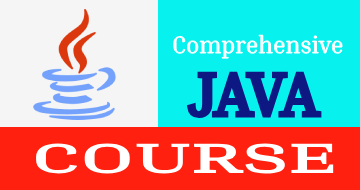



.webp)


